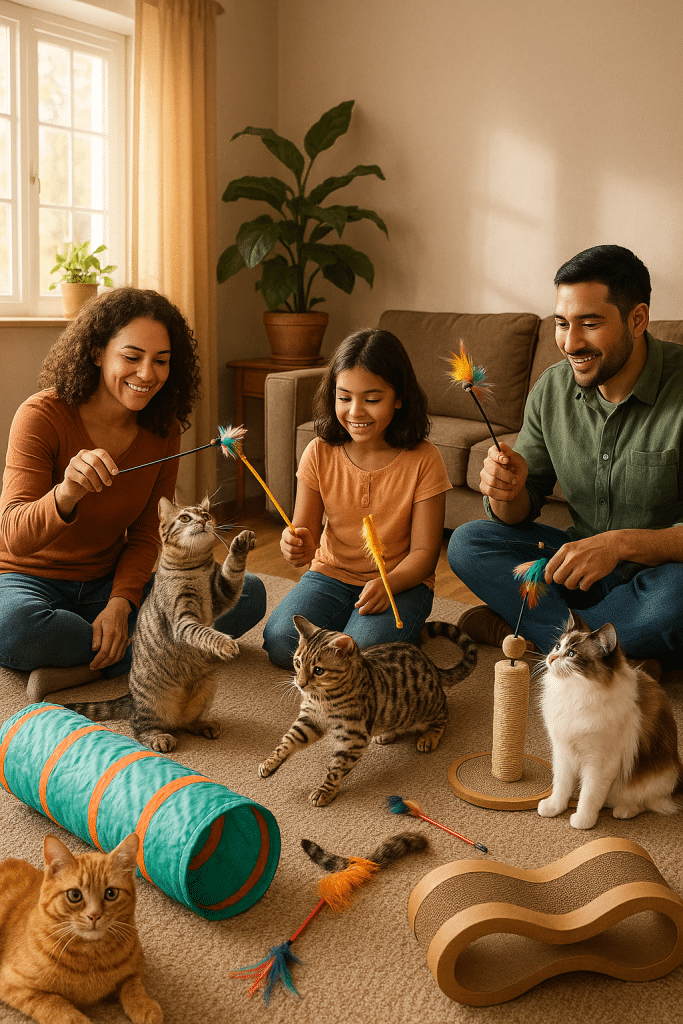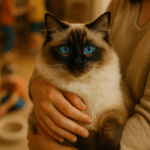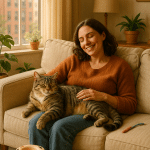If you’re a pet owner or part of a family seeking ways to make your feline friend’s life more vibrant, you’ve landed in the right spot! Cats, especially indoor ones, can sometimes seem aloof or lazy, but the truth is they need a lot more mental and physical stimulation than you might expect. In this article, I’m diving deep into cat enrichment ideas that help tap into your cat’s natural instincts and brighten their daily routine significantly.
You’ll discover why enrichment is essential for your cat’s health, how to design a stimulating environment, interactive toys and engaging play methods, building a safe outdoor catio, and even training and socialization strategies. Whether you have a shy kitty, multiple cats, or a curious one that loves to climb, these expert-backed ideas will provide you with actionable tips to bring a fresh spark into your cat’s life.
Let’s get started on building a happier, healthier, and more active life for your cherished companion!
Understanding Cat Behavior and the Need for Enrichment
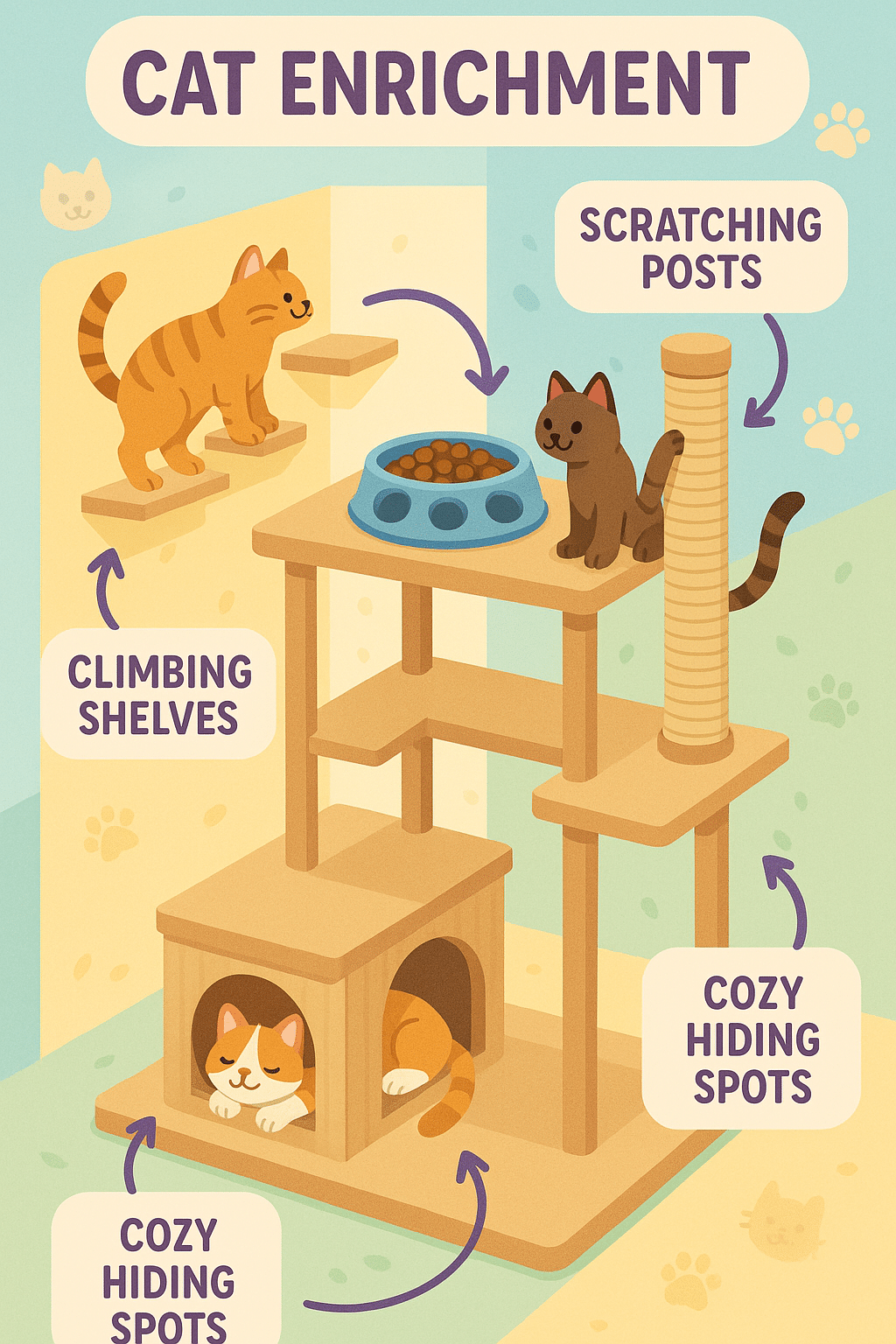
The Importance of Mental and Physical Stimulation for Cats
Cats might look carefree, but their wild ancestors were active hunters with complex behaviors that modern indoor cats still crave to express. Without proper stimulation, indoor cats can develop behavioral issues such as depression, anxiety, or even destructive tendencies. Mental and physical exercise is not just “nice to have”—it’s essential for a cat’s well-being.
Cats have a natural hunting instinct that involves stalking, pouncing, and chasing. These activities keep their minds sharp and muscles toned. Providing a variety of enrichment outlets prevents lethargy and obesity, common issues in indoor-only cats. Research underscores that environmental enrichment reduces stress indicators, lessens aggression, and improves overall feline health. This means enrichment can literally add years to your cat’s life and quality to their days.
Recognizing Signs of Boredom and Stress in Indoor Cats
How do you know if your cat needs more enrichment? Watch for subtle signals like over-grooming (which may cause bald spots), restlessness, excessive vocalization, scratching furniture, or even hiding more than usual. Some cats may become withdrawn or show altered eating habits.
For example, a bored cat might pace back and forth or suddenly attack your feet as if initiating play. Stress might show through dilated pupils or hiding under furniture frequently. Recognizing these signs early allows you to intervene with enrichment strategies customized to your cat’s needs, improving both their happiness and your bond.
Creating a Multi-Sensory Cat Enrichment Environment at Home
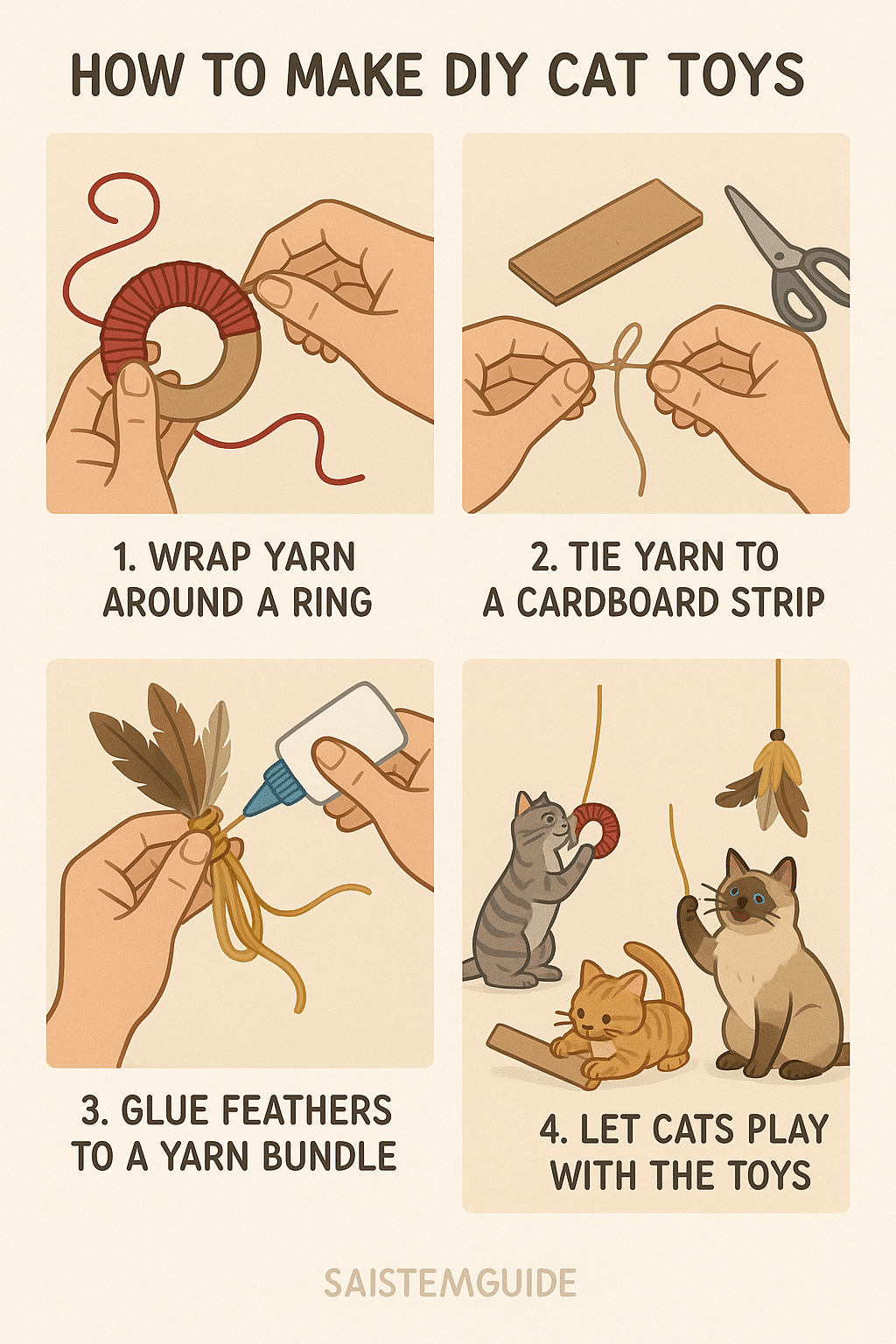
Designing Vertical Spaces: Cat Trees, Shelves, and Climbing Structures
Cats love to observe their territory from high vantage points. Vertical spaces satisfy their desire to climb, perch, and hide — all natural cat behaviors. I recommend investing in or building cat trees that reach near ceiling height, complemented by wall-mounted climbing shelves.
For instance, a well-designed cat tree like the FEANDREA Cat Tree includes multiple platforms, cozy cubbies, and sisal-covered scratching posts, encouraging jumping and scratching simultaneously. Attaching shelves at various heights creates a “cat playground” gym, providing plenty of exercise and rest spots.
This vertical environment not only enriches physical activity but also gives shy or multi-cat household kitties their own private domains, reducing stress and competition.
Incorporating Sensory Stimulation: Textures, Sounds, and Scents
Cats engage deeply with sensory experiences—something that can easily be enhanced at home by introducing new stimuli regularly. Try mixing textures like soft fleece blankets, rough sisal mats, and crinkly tunnels. Different surfaces stimulate tactile curiosity.
Sound-wise, recordings of birds, rustling leaves, or small mammal scurries played softly on a speaker can intrigue any cat. You can find quality “cat TV” videos on YouTube featuring birds and fish moving naturally—perfect for visual and auditory stimulation when you’re busy.
Using Catnip, Silvervine, and Safe Cat-Friendly Plants
Scent plays a huge role in feline enrichment. Catnip (Nepeta cataria) is the classic choice but not all cats respond to it; roughly 50-70% are genetically sensitive. Silvervine (Actinidia polygama) is a fantastic alternative with a stronger effect in many cats. Other safe plants include valerian root and honeysuckle.
Scatter fresh or dried catnip in play areas or toys. You can even grow safe cat grass or catmint indoors, allowing your cat to nibble and smell natural scents. These enrichments encourage playful behavior, sniffing, and rubbing, boosting mood.
Setting Up Visual Stimulation: Bird-Watching and ‘Cat TV’
A simple yet effective idea is placing a bird feeder or birdbath outside a window your cat frequents. Position a comfy perch or window hammock nearby for optimal viewing. Birds, squirrels, and butterflies provide endless fascination.
For rainy or busy days, “cat TV” videos designed to mimic small animal movements stimulate the hunting instinct. These videos are tailored for indoor cats and can improve engagement without needing your constant presence.
Engaging Hunting Instincts Through Interactive Play and Puzzle Feeders
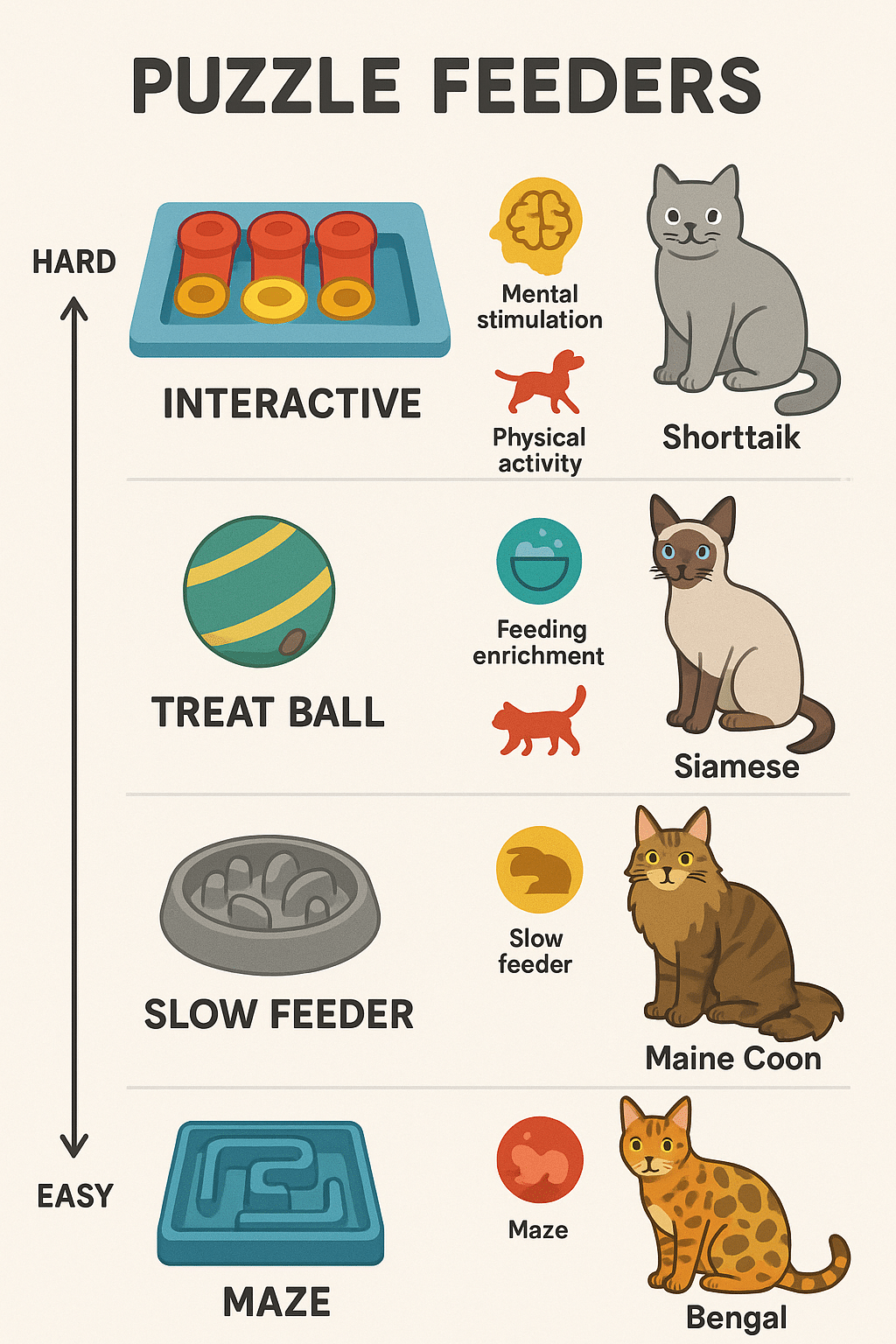
Best Interactive Toys that Mimic Prey Movements
Interactive play mimicking prey movements is perhaps the most rewarding form of enrichment. Toys like battery-operated feather teasers, laser pointers, and wand toys are excellent tools. The key is unpredictability and mimicry of natural prey behavior—darting, fluttering, or sneaking.
The Hexbug Nano Robotic Cat Toy is beloved by many cat owners. These tiny robotic bugs move erratically, stimulating stalking and chasing behavior. Meanwhile, wand toys like the classic Da Bird Feather Toy offer the satisfaction of pouncing.
Playing daily for 10-15 minutes in focused sessions taps into natural hunting urges, supports exercise, and strengthens your bond.
Food Puzzle Ideas to Challenge and Reward Your Cat
Food puzzles combine eating with mental effort, engaging problem-solving skills and slowing down rapid eaters. Simple feeder balls or puzzle boxes require cats to nudge, paw, or roll to dispense kibble.
One popular product is the Catit Senses 2.0 Food Tree, which encourages cats to lap and paw their food out of different levels and pathways. You can also DIY puzzle feeders by cutting holes into a plastic bottle just large enough for kibble to fall through when rolled.
These puzzles are ideal for mental stimulation and weight management, and they keep mealtime fun and rewarding.
DIY Cat Enrichment Projects for Mental Stimulation
If you enjoy crafting, homemade cat enrichment toys can be incredibly effective and budget-friendly. For instance, you can:
- Create a puzzle feeder by cutting holes in a cardboard box and filling it with small treats.
- Make a crinkle paper tunnel from recycled wrapping paper (ensure no harmful materials inside).
- Use toilet paper rolls stuffed with catnip for simple batting toys.
- Build climbing shelves or steps using wood and soft cushion pads.
DIY projects allow you to tailor enrichment to your cat’s preferences and rotate toys frequently to maintain novelty.
Building Outdoor Access: Safe and Enriching ‘Catio’ Ideas
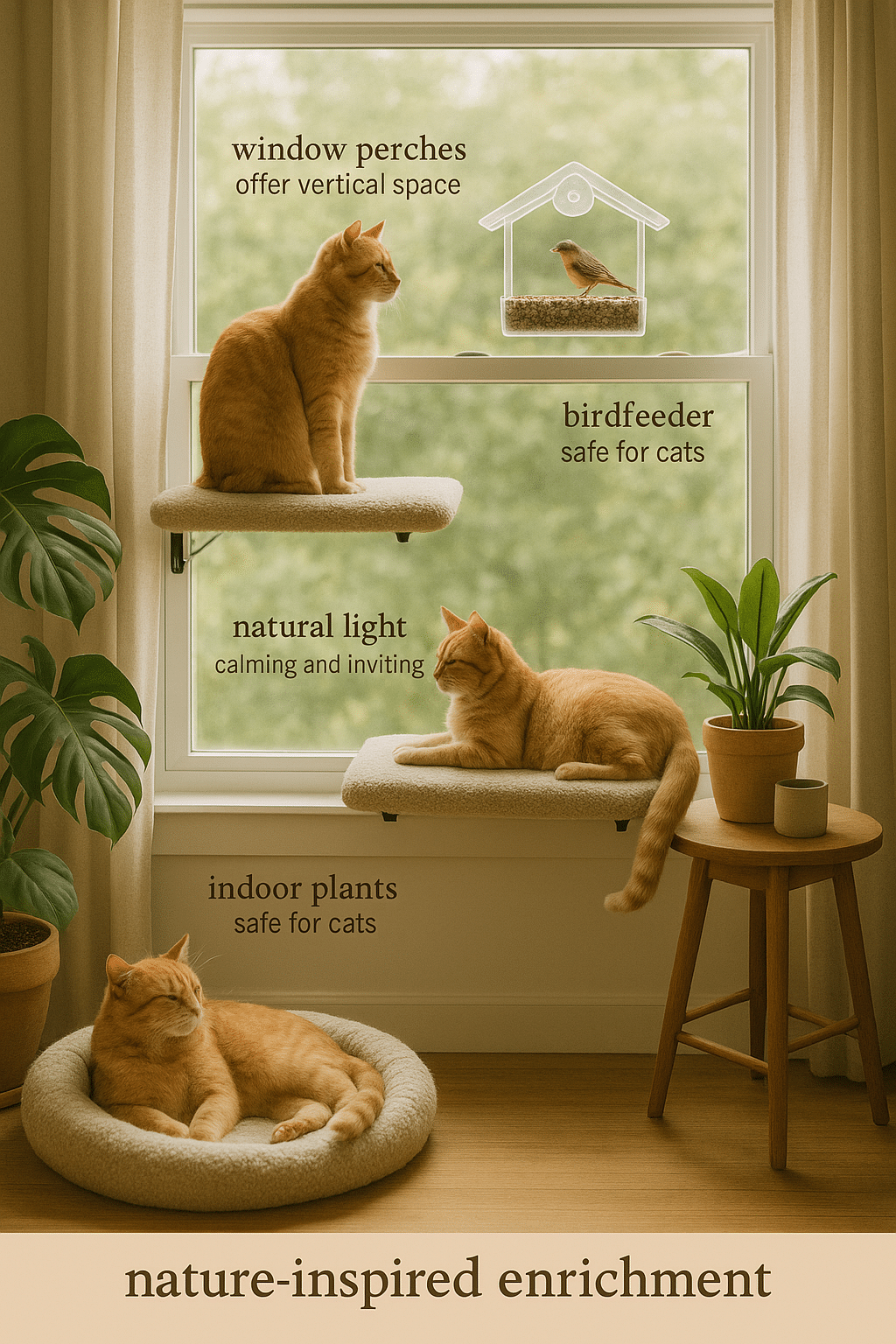
Planning a Secure Outdoor Enclosure for Exploration and Exercise
Many cats dream of outdoor adventures but risk hazards like cars and predators. Building a secure ‘catio’ (cat patio) allows your kitty outdoor time while maintaining safety.
A good catio includes mesh or wire walls, a weatherproof roof, and multiple levels with resting spots and hiding boxes. Materials like galvanized steel wire ensure durability. Size depends on your available space—a balcony catio for apartment dwellers or a backyard enclosure for those with more room.
Brands like The Catio Space offer customizable modular catio kits that are easy to install and stylish.
Incorporating Natural Elements to Encourage Curiosity and Scent Trails
Within your catio, include naturalistic features: potted cat grass, safe plants like lavender and lemongrass, logs, stones, and wooden climbing posts. These invite exploration, scratching, and rubbing.
Scatter dried herbs or catnip along different pathways to create scent trails, stimulating your cat’s olfactory curiosity. Adding a bird feeder visible from the catio encourages bird-watching too.
This outdoor sensory playground maximizes physical health and mental engagement, closely mimicking a natural environment.
Training and Enrichment Strategies for Socialization and Bonding
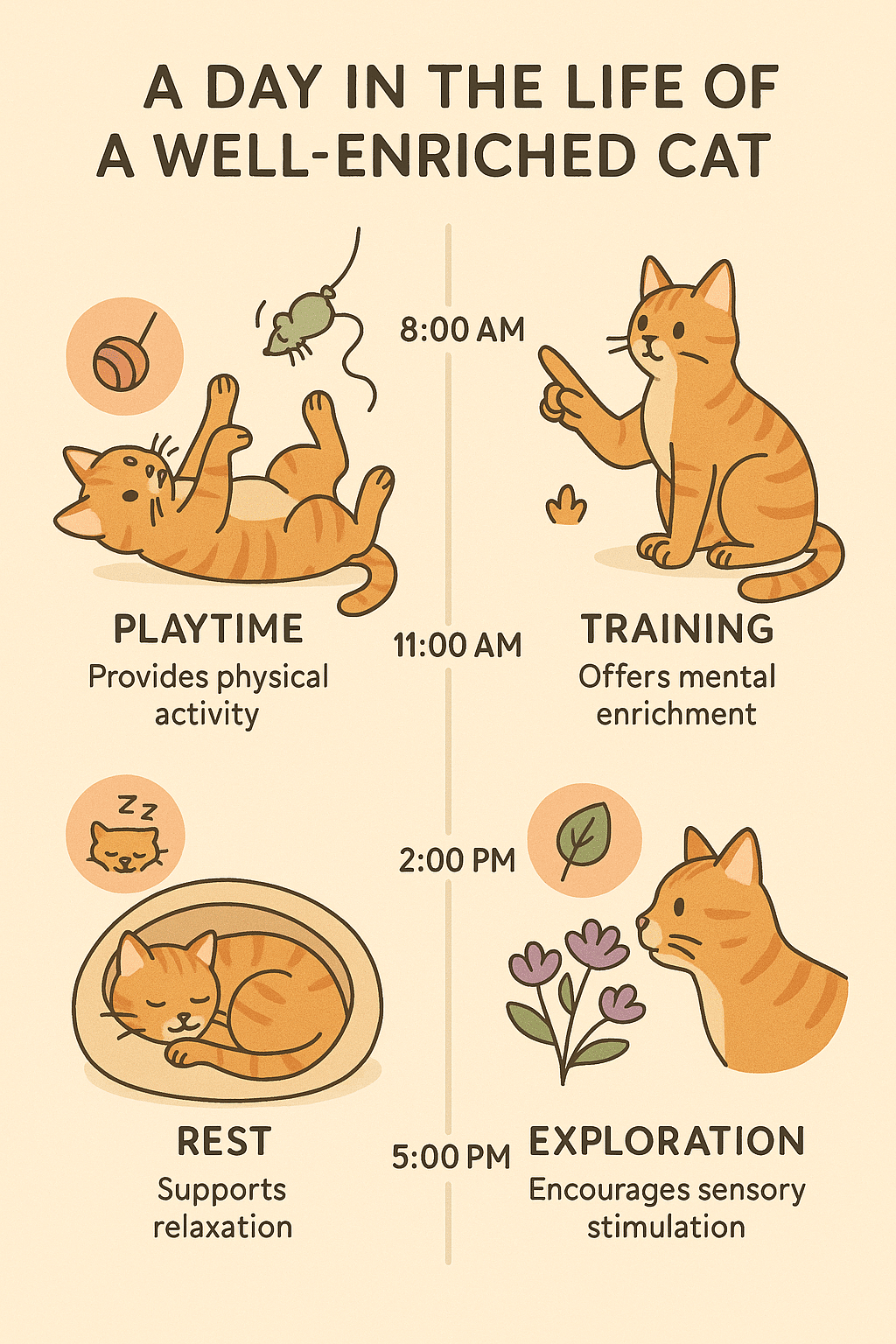
Using Clicker Training to Teach Tricks and Boost Cognitive Health
Clicker training taps into positive reinforcement, making learning enjoyable for your cat. It helps with basic commands or fun tricks like sit, high-five, or fetch.
Start with a small clicker and treats your cat loves. Click the moment your cat performs the desired action, then offer a reward. Consistent short sessions build cognitive skills, reduce frustration, and deepen your connection.
This form of enrichment is especially good for shy cats or those in multi-cat households needing confidence boosts.
Creating Interactive Play Sessions to Strengthen Human-Cat Relationships
Allocating regular interactive play sessions builds trust and provides much-needed exercise. Mix wand toys, laser pointers, and target training games.
I recommend daily 10-minute sessions multiple times a day. Try to end every play session with a “catch” to satisfy hunting instincts. Engaging your cat mentally reduces boredom and strengthens your bond.
Enrichment Ideas Tailored for Shy or Multi-Cat Households
Shy cats benefit from quiet, consistent enrichment like puzzle feeders or hiding boxes. Providing multiple vertical spaces and separate play areas reduces competition in multi-cat homes.
Rotate toys and tailor enrichment to individual personalities. For example, calm cats might prefer feather wands while energetic cats enjoy robotic toys.
Rotating Toys and Activities to Maintain Engagement and Prevent Boredom
Tips for Safe and Easy Toy Rotation and Freshness in Playtime
Cats lose interest if toys become stale. Rotating toys weekly keeps play exciting and novel. Store away some toys and reintroduce them later to renew curiosity.
Ensure toys have no loose parts or dangerous strings. Washing cloth toys occasionally maintains hygiene.
Balancing Rest and Activity: ‘Couch Potato’ Play and Hideouts
Cats sleep 12-16 hours daily. Enrichment respects their need for rest too. Provide cozy hideouts, heated beds, and quiet zones so cats can relax after active sessions.
Combining energetic play with comfy downtime prevents overstimulation and supports overall well-being.
Ensuring Safety in All Enrichment Activities and Monitoring Cat Responses
Identifying Potential Hazards in DIY Toys and Environments
When crafting or buying enrichment tools, safety is paramount. Avoid small parts cats can swallow, toxic materials, or unstable structures that can fall.
Regularly inspect toys for wear and replace damaged ones. Ensure plants are non-toxic and electrical cords are safely tucked.
Monitoring Behavioral Changes and Adjusting Enrichment Accordingly
Observe your cat’s reactions: enthusiasm, stress, or fear. Not all cats like certain activities or scents. Adjust enrichment plans based on preference, health, and energy levels.
If a cat shows aggression or stress, reduce stimulation and try gentler options like puzzle feeders or soft play.
FAQs
Q1: What are some DIY cat enrichment ideas for indoor cats?
You can make puzzle feeders using cardboard boxes, craft crinkle tunnels from wrapping paper, and create climbing shelves with wood scraps. Introducing safe catnip toys and rotating them keeps indoor cats engaged mentally and physically.
Q2: Which are the best interactive toys for cat enrichment?
Battery-operated robotic toys like Hexbug Nano, feather wand toys such as Da Bird, and laser pointers are excellent. They mimic prey movements and encourage natural hunting behaviors.
Q3: How can I create a cat enrichment environment at home?
Combine vertical spaces like cat trees and shelves, sensory stimulation with catnip and sounds, interactive toys, and food puzzles. Including a bird-watching window perch adds visual stimulation.
Q4: What are good food puzzle ideas for cat enrichment?
Food trees, treat-dispensing balls, and homemade puzzle feeders made from plastic bottles or boxes with small holes are excellent for challenging your cat’s problem-solving skills during mealtime.
Q5: How do I build a catio for outdoor enrichment safely?
Design a secure enclosure with sturdy mesh, provide shelter and climbing features, and include natural elements like grass and logs. Modular catio kits like those from The Catio Space simplify the process and ensure safety.
Quick Takeaways / Key Points
- Indoor cats need mental and physical enrichment to prevent boredom and stress.
- Vertical space setups fulfill natural climbing and hiding instincts.
- Sensory stimulation via textures, sounds, and scents like catnip enhances feline engagement.
- Interactive toys and food puzzles simulate hunting and problem-solving behaviors.
- Building a secure catio offers safe outdoor exploration that boosts health and happiness.
- Clicker training and repetitive play sessions improve socialization and mental agility.
- Regular toy rotation and balance between activity and rest prevent overstimulation and boredom.
Conclusion
Your cat’s happiness hinges on much more than food and shelter—it’s about catering to their natural instincts and mental needs. With these cat enrichment ideas in place, you can transform your home into a stimulating sanctuary where your feline feels challenged, loved, and content.
Whether it’s a dynamic cat tree, a clever puzzle feeder, or a secure catio, each enrichment element fosters better health, reduces behavioral problems, and strengthens your bond. I encourage you to start small, observe your cat’s responses, and iterate thoughtfully.
Ready to enrich your cat’s life? Dive into these ideas today, and watch your furry friend bloom into a lively, joyful companion. Remember, every effort you make towards enrichment reflects in your cat’s purrs and playful antics—proof that they’re truly happy!
Happy enriching!

